Top End: Australian Defence Force, US Marines tested in amphibious exercise
A big team of Australians and Americans will remember the Territory coastline unlike most, after completing a 19-day boat trip involving marksmanship, first aid training and beach landings. See the photos.
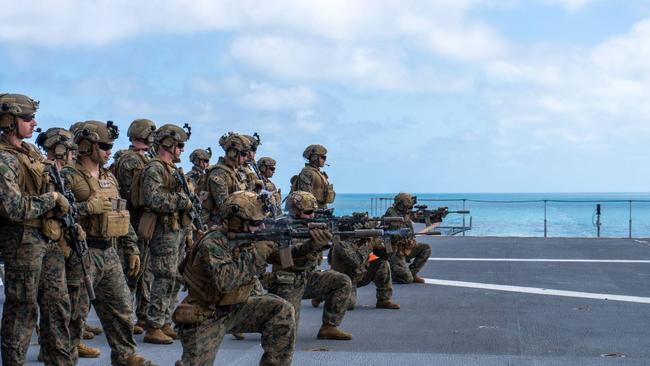
News
Don't miss out on the headlines from News. Followed categories will be added to My News.
It was a 19-day boat trip like no other, with the skills of US Marines and Australian troops tested across marksmanship, first aid training, and amphibious movement in an epic exercise off the Territory coastline.
This month, Royal Australian Navy (RAN) vessel, HMAS Adelaide III, hosted Australian Army personnel as well as 47 US Marines and US sailors for sea-based training activities.
Activities included combat marksmanship, fire planning, mass casualty treatment, and ship-to-shore movement, aimed to achieve integration between the different forces.
For those without their sea legs, hitting a target during the marksmanship activity would have been difficult, with a live-fire deck shoot conducted aboard the moving vessel.
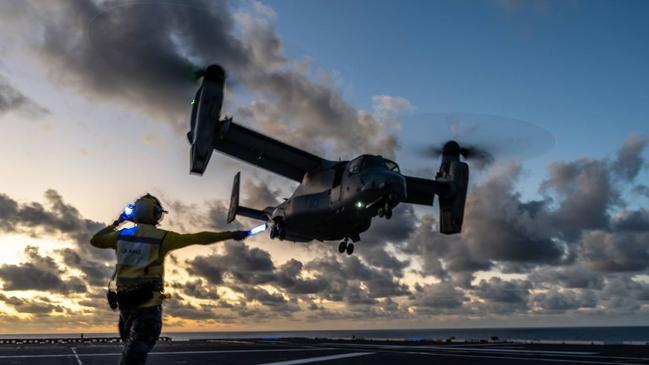
US Marine Staff Sergeant Joshua Sipin said his team appreciated conducting the shoot alongside their Australian counterparts.
“This was an excellent experience for me and my Marines,” he said.
“Working alongside the Australians, we saw their safety procedures and range control, which was valuable for our Marines.”
Additionally, MV-22B Osprey aircraft pilots were given the opportunity to complete landing qualifications on the vessel.
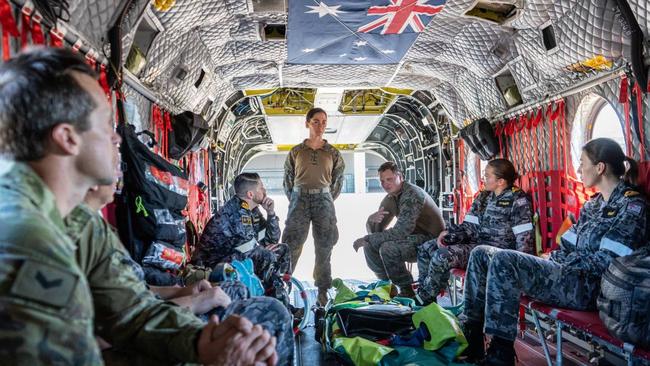
US Marine Lieutenant Colonel Brandon Pope said the return of the Osprey was a positive step towards reintegrating the aircraft.
“What a great opportunity it is to have our pilots conduct landings on the HMAS Adelaide, further strengthening our professional relationship with the Australian Defence Force,” US Marine Lieutenant Colonel Brandon Pope said.
“The return to flight for the squadron has been a methodical approach to re-establish the aircrew proficiency required to execute training events such as this one safely.”
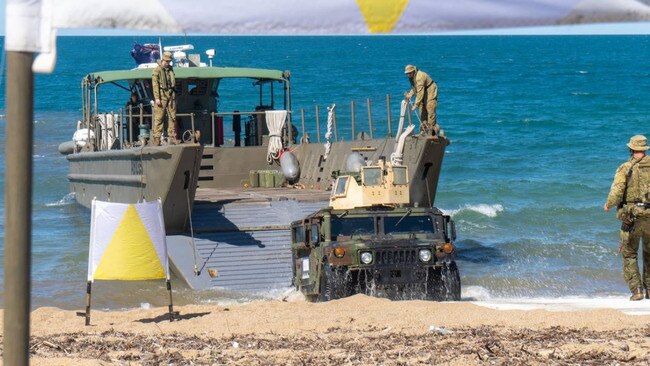
As for medical training, mass casualty planning, surgical care and blood bank application was covered in detail, with Australians and Marines exchanging their practices.
Royal Australian Navy retrieval doctor Commander Peter Smith hailed the partnership as a positive experience.
“We gained valuable insights into each other’s practices and protocols, enhancing our medical readiness and collaboration,” he said.
“It was great to have MRF-D on board to exchange our medical practices.”
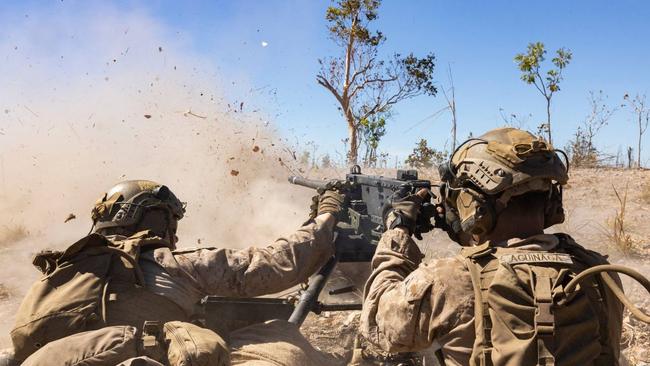
The culminating activity of the exercise was logistics intensive, with members well acquainted with the hurdles associated with transporting personnel, vehicles, and stores from ship-to-shore.
US Marine logistics specialist Corporal Colin Shannon echoed the sentiments experienced from the weeks before.
“Working with the Australians was a great learning experience – we saw how they operate and learned different techniques, which helped us improve our own processes,” he said.
“Their support was crucial in ensuring smooth offloading operations.“

The amphibious exercise coincides with multiple MRF-D training activities across North Australia.
In the Territory bush, gunners from Darwin’s famed artillery sub-unit, 102 Battery, linked up with US Marines in Mount Bundey training area for Exercise Thunder Walk 24.
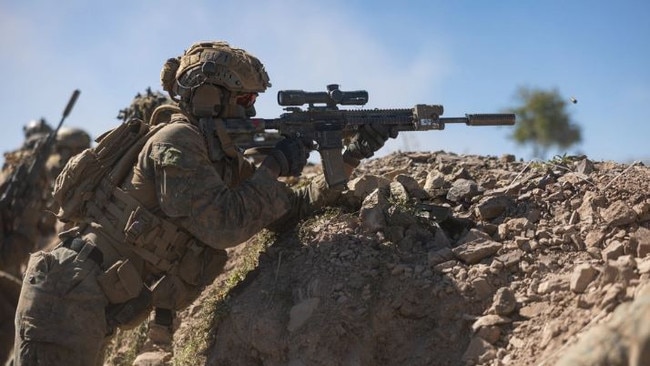
A contingent of MRF-D members were also sent to Townsville Field Training Area, North Queensland, in which a multilateral exercise between US Marines, Australian Army, Papua New Guinean Defence Force, and the Japanese Ground Self-Defense Force was undertaken.
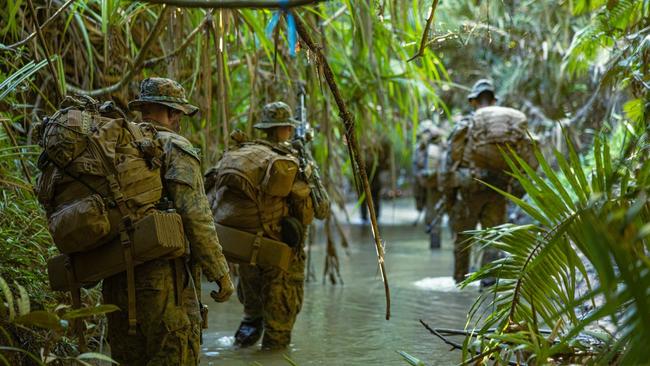
Additionally, a small contingent of MRF-D members travelled north of Townsville to the dense jungle of Tully, to focus on jungle combat training.
Military exercises in the Top End are far from over, however, with tactical flying activity Exercise Pitch Black 24 set to dominate the skies from July 15 to August 1 2024.
With more than 140 fast jets and 4400 personnel set to partake, Exercise Pitch Black 24 will be the largest in the exercise’s 43-year history.





